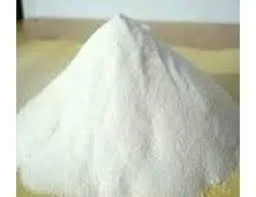
ធ្នូ . 06, 2024 05:55 Back to list
hpmc vs hec
HPMC vs. HEC A Comparative Analysis
Hydroxypropyl methylcellulose (HPMC) and hydroxyethyl cellulose (HEC) are two widely used cellulose ether derivatives that play significant roles in various industries, particularly in pharmaceuticals, food, cosmetics, and construction. Both compounds exhibit unique properties that cater to specific applications, yet they also share certain similarities. This article provides a comparative analysis of HPMC and HEC, focusing on their chemical structure, physical properties, applications, and advantages.
Chemical Structure and Properties
HPMC is a semi-synthetic polymer derived from cellulose. It is obtained by treating cellulose with methyl chloride and propylene oxide, resulting in a compound that possesses both hydrophilic and hydrophobic characteristics. In contrast, HEC is derived purely from cellulose by reacting it with ethylene oxide. HEC is characterized by its high water solubility and thickening properties.
The fundamental difference in their chemical structures is the functional groups present. HPMC contains methoxy and hydroxypropyl groups, whereas HEC contains hydroxyethyl groups, which influence their solubility and viscosity in aqueous solutions. Generally, HPMC exhibits lower viscosity compared to HEC at equivalent concentrations, making it suitable for applications requiring a less viscous medium.
Physical Properties
One of the primary factors that differentiate HPMC and HEC is their water-binding capacity. HEC typically has a higher water retention capacity due to its ability to form strong hydrogen bonds with water molecules. This trait allows HEC to swell more effectively in aqueous environments, resulting in increased thickness and gel formation. HPMC, on the other hand, has moderate water retention properties but is known for its film-forming ability, which allows it to create protective layers over surfaces.
Moreover, the thermal stability of HPMC is generally higher than that of HEC. HPMC remains stable at elevated temperatures, making it suitable for heat-sensitive applications like drug formulation. However, HEC can undergo degradation at high temperatures, which may limit its usage in certain formulations.
hpmc vs hec

Applications
The applications of HPMC and HEC are diverse, reflecting their unique characteristics. In the pharmaceutical industry, HPMC is commonly used as a binder and film former in tablet formulations, while it is also employed as a thickening agent in liquids and gels. Its ability to form controlled-release systems makes it preferable for sustained drug delivery.
Conversely, HEC is predominantly used in cosmetic products as a thickener and stabilizer. Its excellent water retention properties make it ideal for creams, lotions, and gels, enhancing the sensory experience and prolonging moisture retention. In the food industry, both HPMC and HEC find uses as food additives, where HPMC serves as a gluten substitute in gluten-free products, while HEC acts as a stabilizer in various formulations.
Advantages and Disadvantages
Both HPMC and HEC come with their own sets of advantages. HPMC is favored for its stability, adjustable viscosity, and film-forming properties, making it versatile in various applications. However, its hydrophobic nature can limit its effectiveness in water-based systems requiring high solubility.
On the other hand, HEC’s superior solubility and thickening capacity make it an excellent choice for products that require a substantial viscosity and water retention. Nevertheless, its thermal instability presents challenges in high-temperature applications.
Conclusion
In conclusion, both HPMC and HEC are invaluable cellulose derivatives with distinct properties and applications. The choice between HPMC and HEC largely depends on the specific requirements of the formulation. Understanding the differences and similarities between these two compounds allows manufacturers to optimize their products for improved performance, ensuring that they select the most suitable cellulose ether for their unique needs.
-
Unlocking the Benefits of HPMC Products: A Gateway to Versatile Applications
NewsAug.07,2025
-
Unleashing the Potential of HPMC Ashland: A Comprehensive Look
NewsAug.07,2025
-
Tile Bonding Cellulose: The Key to Superior Adhesion and Durability
NewsAug.07,2025
-
Hydroxypropyl Methylcellulose Powder: The Versatile Component in Modern Pharmaceuticals
NewsAug.07,2025
-
Hydroxyethyl Cellulose: The Versatile Solution for Various Industries
NewsAug.07,2025
-
Hydroxyethyl Cellulose (HEC): The Versatile Polymer for Various Applications
NewsAug.07,2025







